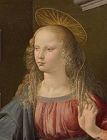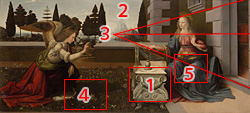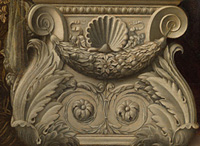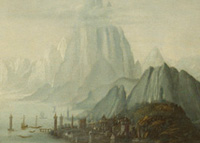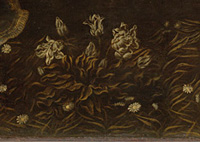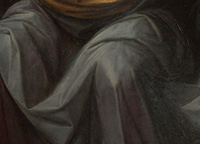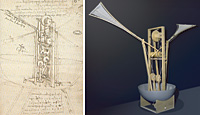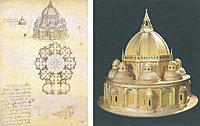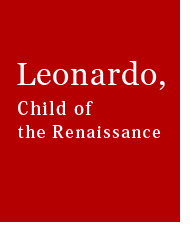
L eonardo da Vinci was born on 15 April 1452 in the village of Vinci, just outside Florence, Italy. Dedicating his 20's to learning painting and crafts in Florence, he was then to move to Milan, entering the service of Ludovico Sforza, Duke of Milan, in whose court he subsequently enjoyed a fair amount of success and notoriety.
Vasari mentions in his Lives of the most Eminent Painters, Sculptors and Architects (first published in 1550) that the greatness of Leonardo "was seen by all mankind in Leonardo da Vinci, in whom, besides a beauty of body never sufficiently extolled, there was an infinite grace in all his actions; and so great was his genius, and such its growth, that to whatever difficulties he turned his mind, he solved them with ease..."
Besides Vasari's statement and Leonardo's personal notebooks, a wealth of information indicative of his personality still remains. Two contradictory characters emerge from these accounts. One is an outgoing, confident, intellectual, humorous and elegant gentleman, while the other is unconfident, stubborn, and ascetic. Most likely, Leonardo wore both faces. As an illegitimate son, Leonardo, though born into an affluent, prosperous family, was denied the opportunity of a formal education. Obtaining an apprenticeship at 13, he subsequently spent his life immersed in the study of a broad variety of complex and technical subjects. Yet despite his firm grasp of such matters and an apparently genius, he was still seemingly struck by feelings of intellectual inferiority that stemmed from a perceived notion that without such formal schooling. However, as he grew intellectually, he began to show an intense fascination in subjects such as the mechanism of biopoiesis, quite likely provoked by strong longing for the mother from whom he was separated when young. His feelings for her were so powerful and complex that the selection of motif and delineation in his paintings quite evidently suggests a preoccupation with maternity.
Leonardo was to remain single for his entire life; he failed to settle in one place on account of the dangers present in Europe in those politically and socially turbulent times; and was to travel to many countries at the behest of his talent. Living as he did during the Age of Geographical Discovery, he additionally developed a keen interest in the physical earth itself. His talent both benefited from, and blossomed under the Renaissance, an era of significant change and cultural enlightenment throughout society. Truly, he was a child of the age. In his final years, he accepted an invitation from the young king Francis I to enter into his service in France, where he was to spend the remainder of his life, living in Amboise, he died peacefully in 1519.
|

